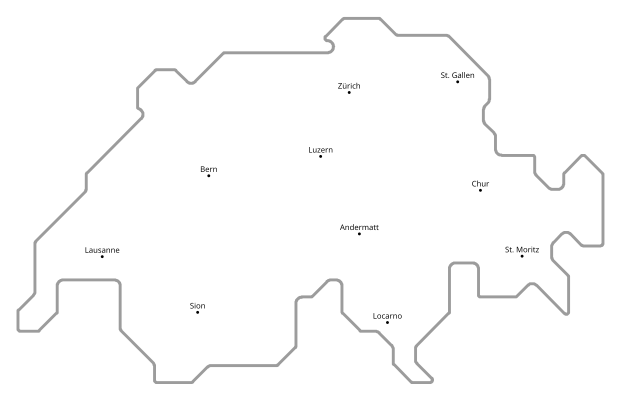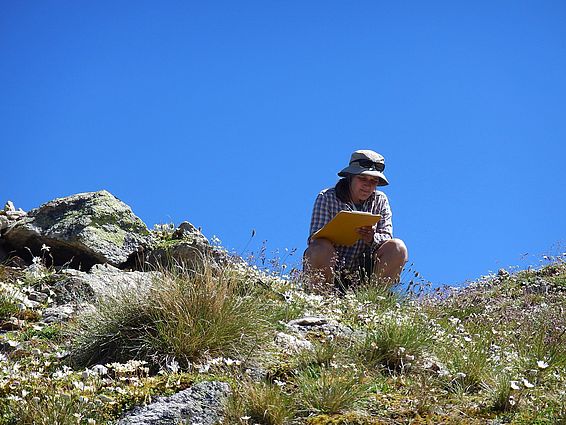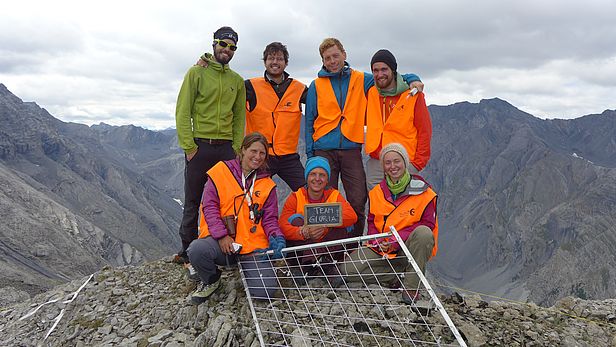GLORIA GLobal Observation Research Initiative in Alpine environments
Sonja Wipf
Project staff2015 - 2025
Financing- Federal Office for the Environment FOEN
- Research commission of the Swiss National Park
- Dr. Joachim de Giacomi foundation of the Swiss Academy of Natural Sciences
- Beatrice Ederer-Weber foundation
Scientific studies have shown that because of climate change, more plant species are growing on our mountain summits nowadays than a few decades ago. The best way of researching future vegetation patterns, for instance in order to determine whether plants from lower altitudes displace the indigenous species, is by repeated samplings on permanently marked sites. In the higher altitude mountainous zones, however, such monitoring sites are quite rare.
This resource gap was filled to some extent around 15 years ago when GLORIA (Global Observation Research Initiative in Alpine Environments) was established and researchers from various countries set up permanent sites in alpine regions all over the world. Each of these target regions encompasses at least four mountain peaks along a given altitudinal gradient. At intervals of five to seven years, experts visit the summits to collect temperature data and record the species and frequency of all the plants there in precisely measured plots and according to a standardized agenda. This is a useful method for determining, even on a small scale, whether species are either becoming newly established, whether their population size is increasing or decreasing, or whether they are disappearing.
SLF examining mountain flora in the Swiss National Park
In European mountain regions, 28 such target regions have been created to date, including three in Switzerland: one in the Valais, and two further target regions in the region of the Swiss National Park (established in 2002/2003, four peaks each, on dolomitic limestone and on silicate rock respectively). In 2015, the latest, and for many regions the third surveys on the European GLORIA summits were carried out. Thanks to recently initiated cooperation between the Swiss National Park and the SLF, a team of researchers headed by two SLF scientists re-examined the eight peaks in the Engadine. With the aid of historical records compiled by earlier botanists, the two academics are already coming to a better understanding of how the flora on our mountain summits is changing. The work undertaken within the scope of the two studies is complementary. Although the mountain flora study shows how the flora has changed over a century, it reveals only relatively large differences – the disappearance of species or the emergence of new ones. GLORIA, in comparison, spans a relatively short period, but records smaller changes as well, such as shifts in the frequency or in the growth location of individual species.
Long observational series important for international comparisons
The vegetation composition in mountain regions strongly depends on the local temperatures. Lower or south exposed locations are warmer and therefore display denser and richer vegetation than higher locations or north slopes. In line with this, the species richness on mountain summits has increased since 2002/2003, on average at a rate of one additional species per two years. This increase is driven by the increasing number of species from lower altitudes that manage to establish at higher elevation. For the time being, there is however no trend that cold-adapted species are on the decline due to competition by these thermophilous species.
These long-term observational series not only provide valuable indications of how various alpine regions in Switzerland are responding to climate change, but also serve as a crucial basis for making comparisons on a European and even worldwide scale. Analyses over multiple European mountain regions combining GLORIA data with longer-term summit flora data demonstrate an accelerating increase of the species richness on mountain summit. A process driven by climate warming - the higher temperatures had risen during the timespan between two vegetation surveys on the same summit, the greater the increase in the number of plant species found there. In the longer run, the GLORIA monitoring will help to establish how the alpine vegetation cover will develop and which species will become winners and losers of climate warming.
Ecosystem research on mountain tops
Complex questions on the changes in ecosystem composition and functions in a changing climate require multidisciplinary research. This works best if scientists from different disciplines interact and collaborate in the same research site. GLORIA summits are excellent sites for this type of research, as long as the vegetation is not exceedingly disturbed. In collaboration with soil scientists, we therefore perform experiments on the microbial composition and on litter decomposition in alpine soils. These studies contribute to the understanding on how the interactions between plants and soil at high altitudes will change with global warming.
Links
Master's theses
2017 Jonathan von Oppen: Tea Time On the Summits: Leaf litter decomposition in the Alpine environment
2016 Remo Wild: Richness increase and thermophilization of alpine vegetation on Swiss mountain summits - Analysis of plant trait changes over the last 14 years on 12 GLORIA summits


